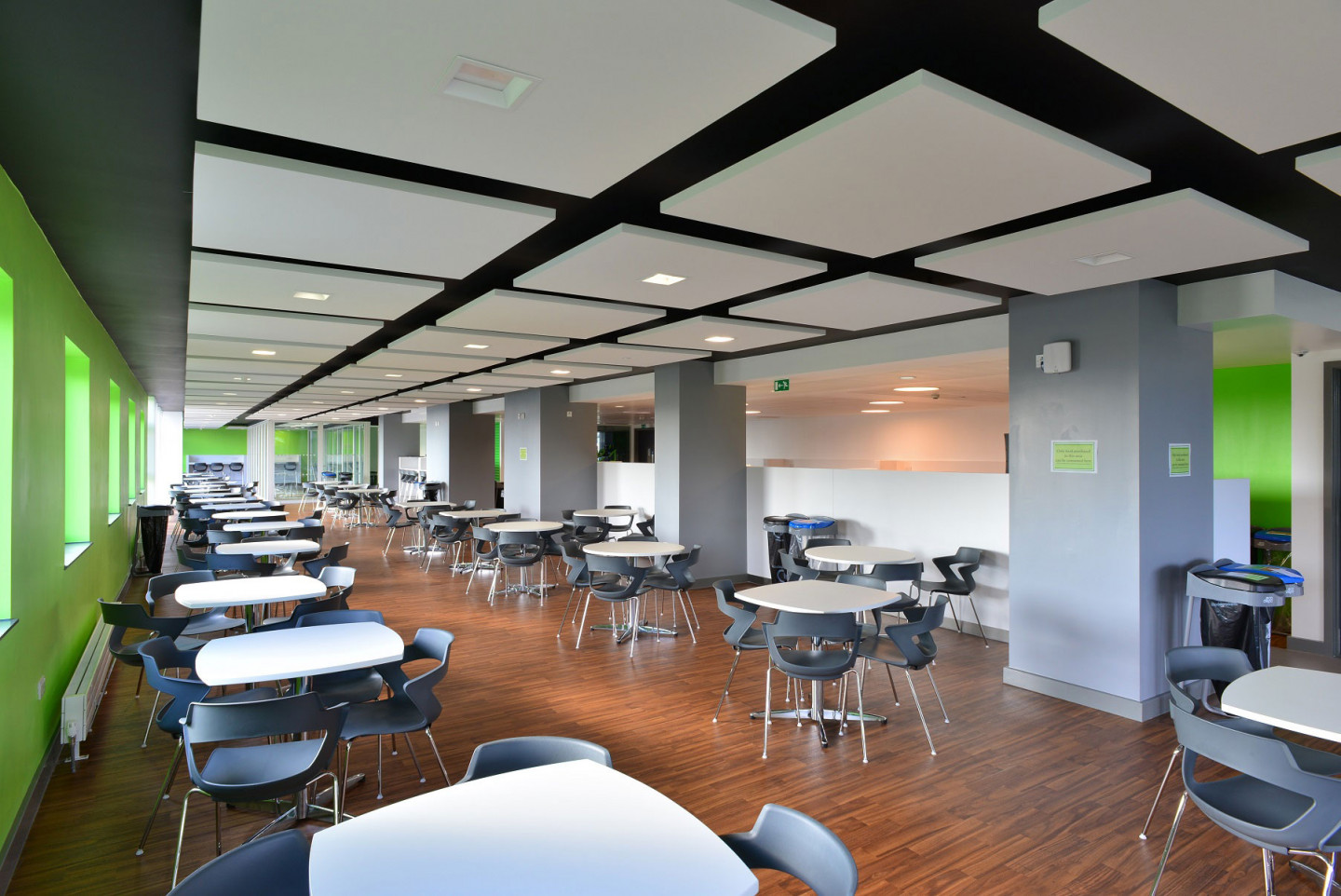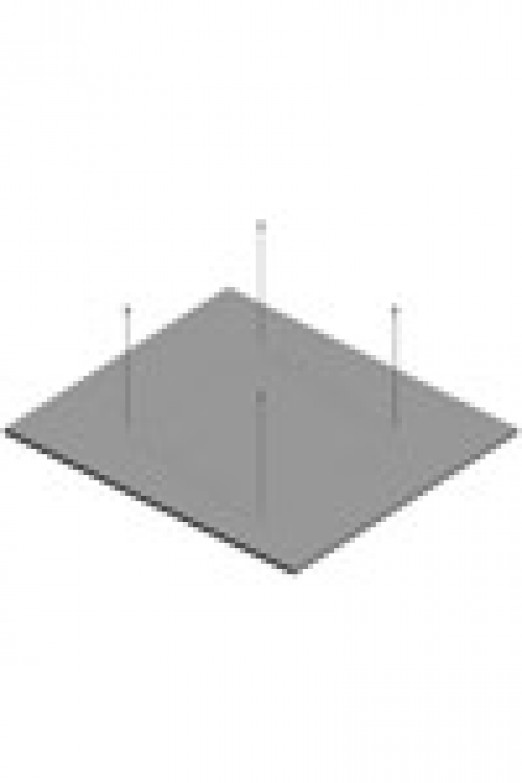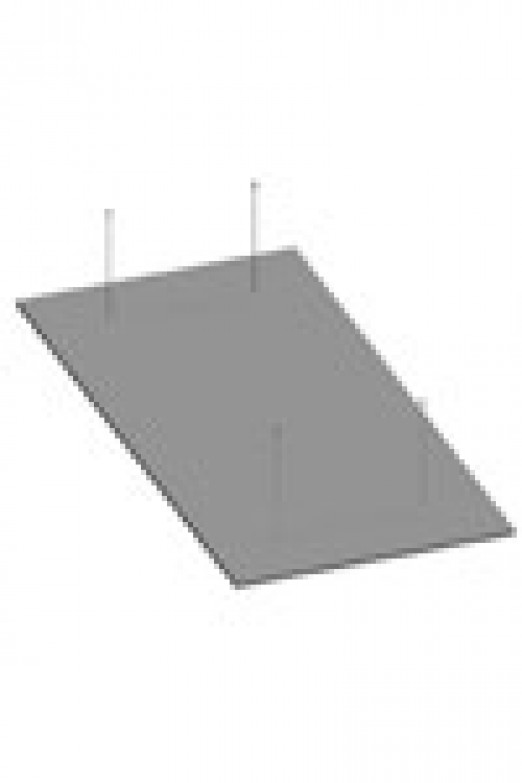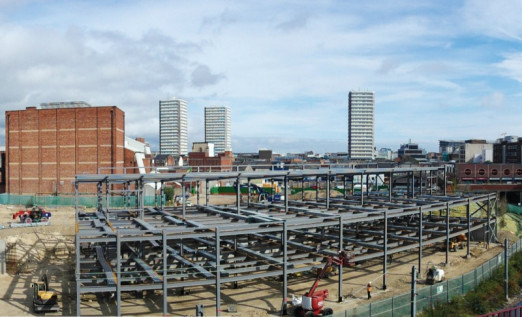An unparalleled range of acoustic ceiling systems from one manufacturer - Armstrong - has helped transform a 1970s tower of teaching into an "exciting and stimulating learning environment to reflect 21st Century education".
The £13million refurbishment of the 11-storey Parsons Tower which was built in 1973, shortly after the amalgamation of the College of Further Education and Technical College to form Newcastle College, features multiple material ceiling systems in areas ranging from the main canteen through the lecture hall to a bespoke children's AV space.
Sean Gallagher, associate at regular Armstrong specifiers Red Box Architecture said: "Key spaces such as the ground-floor reception utilised linear metal plank solutions with integral light fittings [Armstrong's B-H 300 microperforated system with OP19 acoustic infill) to create a dynamic light and airy feel to the main visitor experience, suspended acoustic rectangular and square canopies on a black plasterboard background [Armstrong's Optima L 1200 x 240mm & 1200 x 1200mm canopies] provided variety and interest to the main refectory, and classrooms benefited from the additional reflected light from white metal ceilings [Armstrong's metal MicroLook 16 microperforated 600 x 600mm tiles with OP19] throughout for background lighting."
The 7,000m2 of Armstrong systems used at Newcastle College include Axal Vector metal lay-in tiles, Dune Max Tegular, Parafon Hygien and black Nevada Board mineral tiles, black Mesh metal tiles, B-H 300 metal planks, MicroLook 16 microperforated metal tiles and Optima L canopies. In addition, Armstrong's Axiom Vector profiles provided a seamless transition between plasterboard, other acoustic finishes and Axal Vector metal tiles.
They were specified by Red Box Architecture as they "represent good value for money and give optimum acoustic performance combined with long-term durability and low maintenance which are essential factors for large educational establishments."
Sean Gallagher added: "The ceilings are fundamental to the visual appearance of all key spaces, providing the architect with a varied palette of functional options and visual effects."
More about rejuvenating the building than a simple superficial refurbishment, the work has given the building a new lease of life, extending its usable life by 30 to 40 years.
Externally, it presents a completely new face to the Newcastle city skyline while internally the floor plates have been altered to provide new and quality environments offering first-class learning and real-life working experiences for the expanding curriculum of Health and Enterprise.
This includes training environments such as the hospital wards on levels two to seven (where Armstrong's MicroLook 16 microperforated metal tiles have been used), as well as child care and specialist care where the students can practice and develop their knowledge.
Reconfiguring the ground-floor, which had been the target for vandalism, and entrance/break out/lobby areas with Armstrong's unique secure but accessible metal Axal Vector tiles has improved the arrival experience of staff, students and visitors and includes Armstrong's black Mesh metal tiles above the semi-circular reception desk, a café where Armstrong's metal MicroLook 16 microperforated tiles have been used, and kitchen where Armstrong's ISO 5 standard Parafon Hygien tiles have been used for their balance of white visual comfort, washability and cleanroom performance. At this level there is also the refectory where Armstrong's square Optima L canopies have been used, student services and Learning Resource Centre.
Nearby, a double-height lift lobby features Armstrong's rectangular Optima L canopies while levels eight to 10 now feature a mix of classrooms and a Learning Resource Centre for Higher Education students.
The Armstrong systems were supplied by SIG Interiors Tyneside and installed over eight months by Omega contractor Bill Mordue Interiors.
"The client is delighted with the end result," said Sean.




